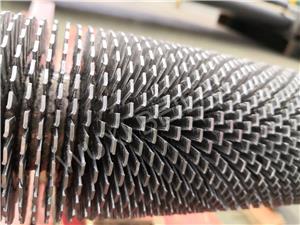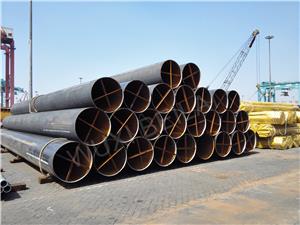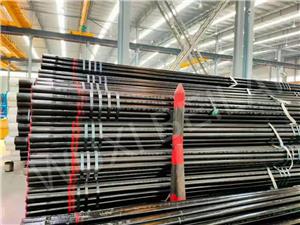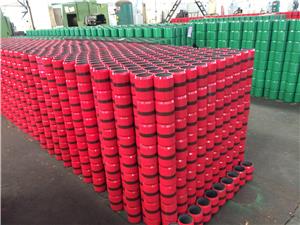Seamless vs. Welded Line Pipe: Which is Better for Oil & Gas Transmission?
In the oil and gas industry, selecting the right type of pipeline is crucial for ensuring efficiency, safety, and cost-effectiveness. Among the various options available, Seamless Line Pipe and welded line pipe are the two primary choices for transmission pipelines. Understanding the differences between these two types of pipes, their advantages, and their ideal applications can help industry professionals make informed decisions.
What is Seamless Line Pipe?
Seamless Line Pipe is manufactured through a process that does not involve any welding or joining. Instead, it is produced by piercing a solid billet of steel and then stretching it to the desired length and thickness. This results in a pipe that has a uniform structure and is free from any seams or welds.
Advantages of Seamless Line Pipe:
1. Seamless Line Pipe-Higher Strength & Durability: Since there are no welded joints, seamless pipes exhibit superior strength and resistance to pressure, making them ideal for high-pressure applications.
2. Seamless Line Pipe-Corrosion Resistance: The absence of welds reduces the risk of corrosion, especially in harsh environments such as offshore drilling or acidic gas transmission.
3. Seamless Line Pipe-Better Performance in Extreme Conditions: Seamless pipes can withstand higher temperatures and pressures compared to welded pipes, ensuring reliable performance in demanding applications.
4. Seamless Line Pipe-Enhanced Reliability & Safety: Without welded seams, seamless pipes minimize the risk of cracks, leaks, or failures under stress, making them a safer choice for transporting volatile substances like oil and natural gas.
5. Seamless Line Pipe-Consistent Wall Thickness: The uniformity of seamless pipes ensures predictable mechanical properties, which are crucial for critical applications.
What is Welded Line Pipe?
Welded line pipes, in contrast, are manufactured by rolling steel plates or coils into a cylindrical shape and then welding the edges together. The welding process can be performed using different techniques, such as Electric Resistance Welding (ERW), Longitudinal Submerged Arc Welding (LSAW), or Spiral Submerged Arc Welding (SSAW).
Advantages of Welded Line Pipe:
1. Welded Line Pipe-Cost-Effective: Welded pipes are generally more affordable to manufacture than seamless pipes, making them a cost-efficient option for large-scale projects.
2. Welded Line Pipe-Availability in Large Diameters: It is easier to produce welded pipes in larger diameters, which is beneficial for applications requiring high flow rates.
3. Welded Line Pipe-Easier Customization: Welded pipes offer more flexibility in terms of length and thickness, as they can be tailored to specific project requirements.
4. Welded Line Pipe-Shorter Production Time: Since welded pipes can be made from steel plates or coils, production can be scaled up quickly to meet demand.
Seamless vs. Welded Line Pipe: Which is Better for Oil & Gas Transmission?
While both types of line pipes are widely used in the oil and gas industry, the choice depends on several factors, including operating conditions, budget, and regulatory requirements.
- High-Pressure & High-Temperature Applications: Seamless line pipe is the preferred choice for applications requiring high-pressure resistance and exposure to extreme temperatures. It is commonly used in offshore drilling, deep-sea exploration, and high-temperature steam transmission.
- Long-Distance Transmission Pipelines: Welded line pipes are often used for long-distance oil and gas transportation, especially in onshore projects where cost-effectiveness is a key concern.
- Corrosive Environments: Seamless pipes offer better corrosion resistance, making them suitable for environments with high acidity, sour gas, or harsh chemicals.
- Pipeline Regulations & Standards: Many international standards, such as API 5L, specify the use of seamless pipes for critical applications where safety and reliability are paramount.
- Budget Constraints: If cost is a primary consideration and the application does not involve extreme conditions, welded pipes may be a viable alternative.
Both Seamless Line Pipe and welded line pipe have their unique advantages and applications in the oil and gas industry. While seamless pipes offer superior strength, reliability, and resistance to extreme conditions, welded pipes provide cost savings and flexibility for large-scale infrastructure projects. Ultimately, the choice depends on the specific requirements of the project, ensuring that the selected pipeline delivers optimal performance and safety.
As a leading Seamless Line Pipe manufacturer, BEILAI Group provides high-quality, API 5L-certified seamless pipes designed to meet the rigorous demands of the oil and gas industry. Our products ensure superior performance, durability, and compliance with global standards. Contact us today to learn more about our seamless pipeline solutions and how they can benefit your operations.




